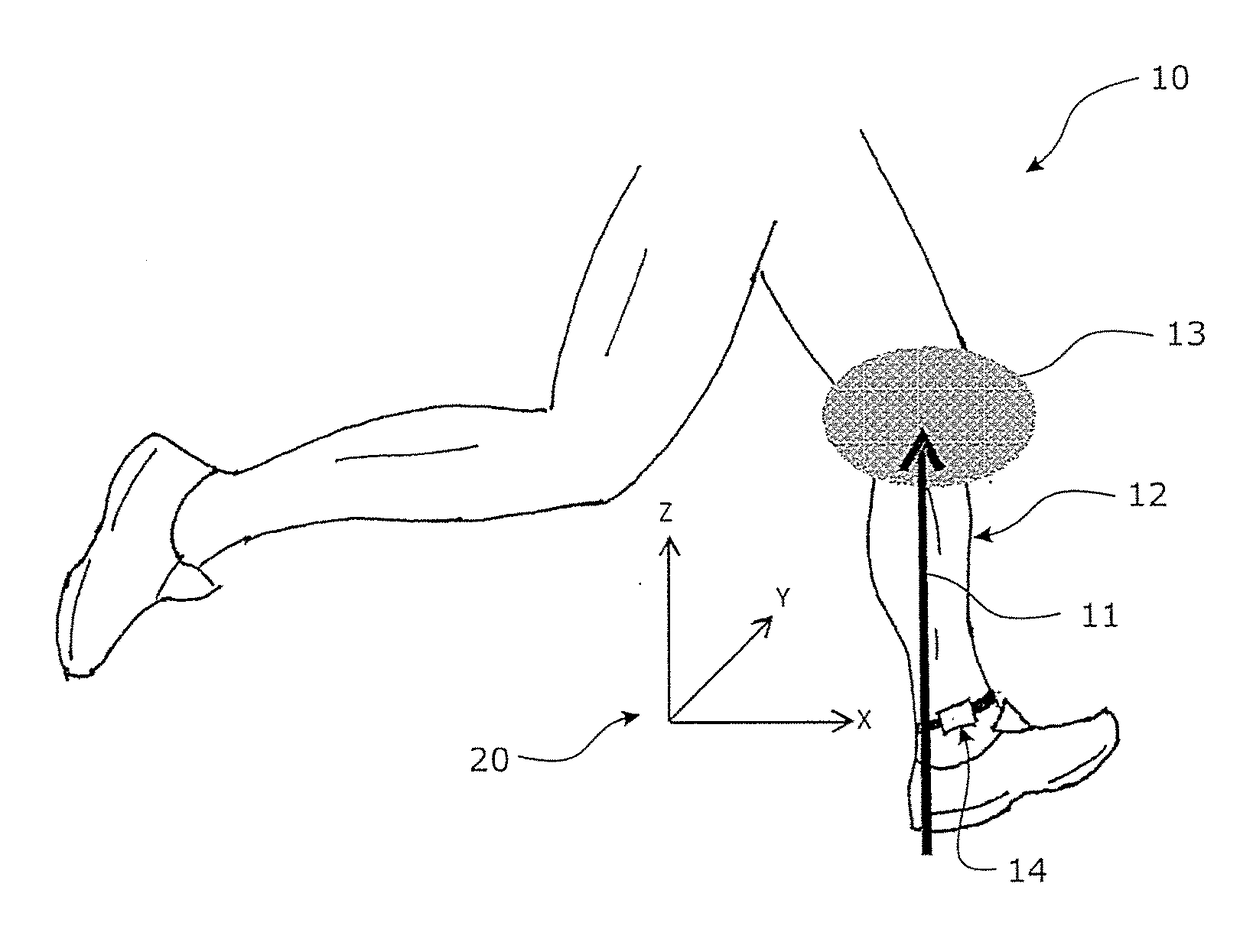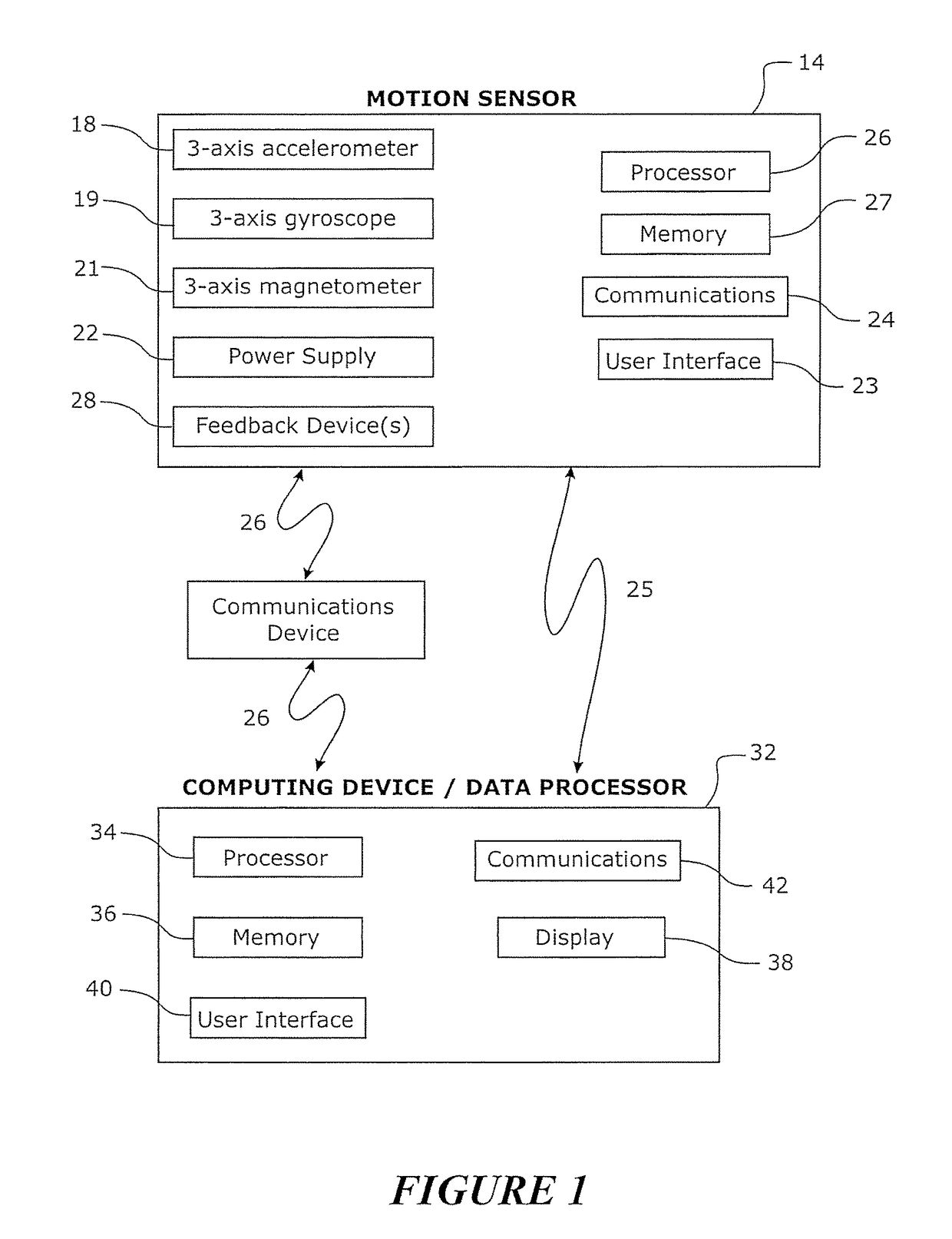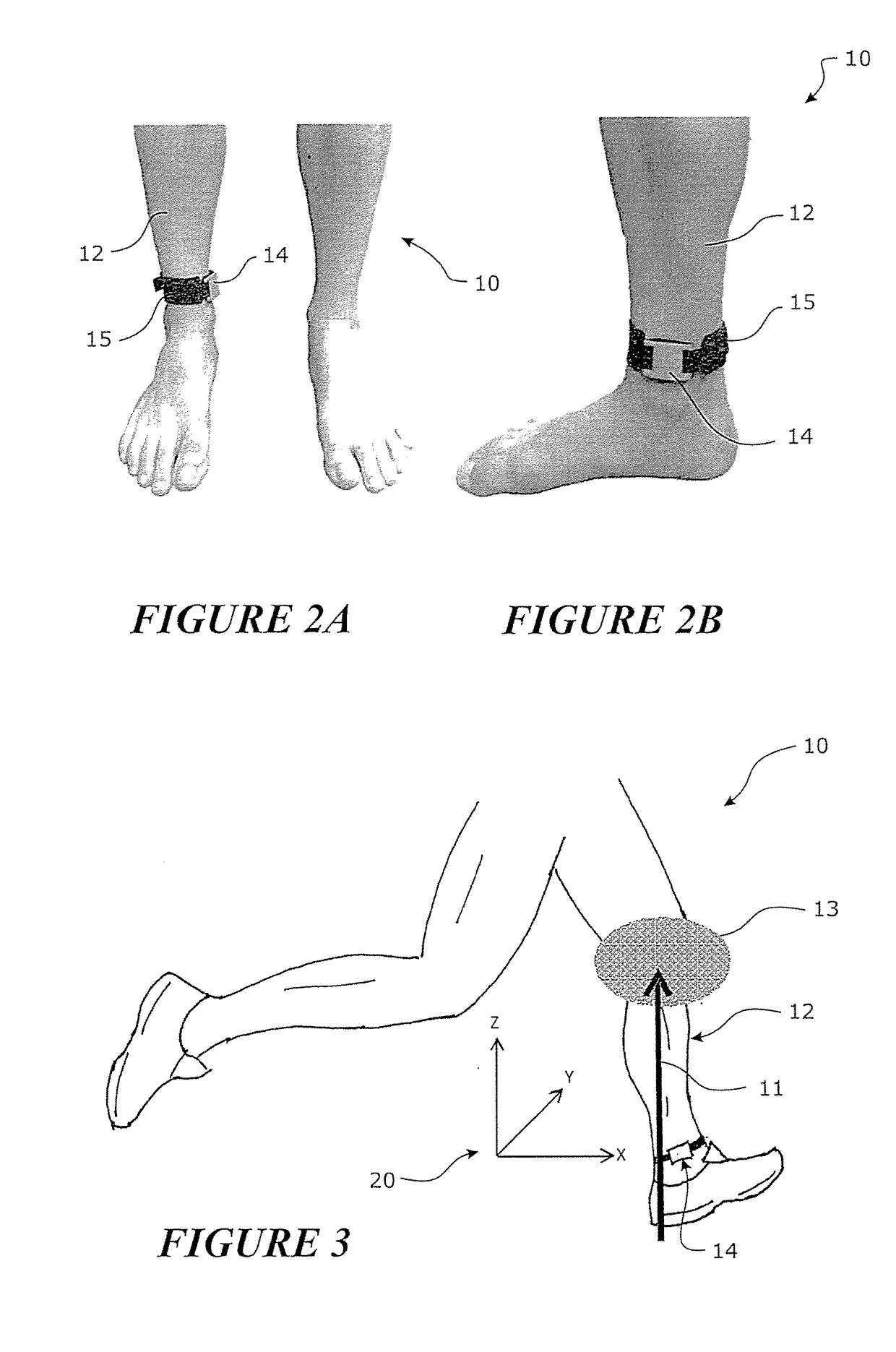Lower limb loading assessment systems and methods
a technology for assessment systems and lower limbs, applied in the field of lower limb loading assessment systems and methods, to achieve the effect of minimizing lower limb injury and low limb loading
- Summary
- Abstract
- Description
- Claims
- Application Information
AI Technical Summary
Benefits of technology
Problems solved by technology
Method used
Image
Examples
first embodiment
2. Real-Time Running Qait Feedback System
[0157]The shape and form of an individual's tibial ‘shock signature’ allows the quantification of metrics such as runner deviation, i.e. the deviation from their normal signature shock. This means that changes in the runner's gait can be identified, and with the right processing tools we can quantify these differences and infer smart conjectures about how the runner should alter their gait to return to their best form. Other metrics such as cadence can also be measured.
[0158]The use of tri-axial accelerometry to measure individual and resultant tibial shock allows the analysis of a subject's foot strike in three dimensions, which can be used to assist in changing the subject's running technique if it means they will receive less tibial shock. The sensors ability to reproduce body movement in 3D space can be used to visualize a person's technique in a virtual simulation program (e.g. OpenSim, Stanford CA).
[0159]Referring to FIGS. 9-10C, an imp...
second embodiment
3. A Cumulative Load Monitoring System
[0166]Referring to FIG. 11, a cumulative load monitoring system embodiment of the lower limb loading assessment system will be described. The system employs the general hardware system and components discussed with reference to FIGS. 1-3. The cumulative load monitoring system is configured to generate a Daily Load Stimulus (DLS) metric in response to the tibial shockwave data sensed by the motion sensor when the user is engaged in activity sessions throughout the day.
[0167]Musculoskeletal tissue, such as bone, adapts to its mechanical environment by sensing the local tissue deformations (strains). Daily Load Stimulus (DLS) uses tissue stress as a key indicator for load. The DLS is important because it is a method that quantifies the daily stress histories of bone in terms of daily cyclic stress magnitudes and the number of daily loading cycles (i.e. total loading exposure). This information aids in defining the amount of stresses and loads impos...
third embodiment
4. Shoe-Fitting Feedback System
[0192]With reference to FIGS. 12A-15, a shoe-fitting feedback system embodiment of the lower limb loading assessment system will be described. The shoe-fitting system employs the same hardware configuration and components as described with reference to FIGS. 1-3 and is configured to quantify the different levels of tibial shock that arise from running with different respective pairs of shoes. This information is used to provide a customer with a pair of shoes that suits their own personal gait. The shoe-fitting system uses a tibial shock metric, such as a tibial shock score, to identify a pair of shoes that reduce loading to the knee of a subject person. Optionally, the shoe-fitting system may also comprise a treadmill or similar exercise platform, provided with forward and backward facing cameras capturing the subject's running style on the treadmill.
[0193]Different shoes exhibit varying levels of stiffness and cushioning, leading to differences in th...
PUM
 Login to View More
Login to View More Abstract
Description
Claims
Application Information
 Login to View More
Login to View More - R&D
- Intellectual Property
- Life Sciences
- Materials
- Tech Scout
- Unparalleled Data Quality
- Higher Quality Content
- 60% Fewer Hallucinations
Browse by: Latest US Patents, China's latest patents, Technical Efficacy Thesaurus, Application Domain, Technology Topic, Popular Technical Reports.
© 2025 PatSnap. All rights reserved.Legal|Privacy policy|Modern Slavery Act Transparency Statement|Sitemap|About US| Contact US: help@patsnap.com



